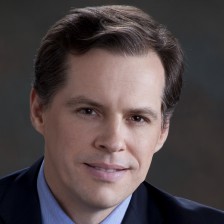Election 2016 Forecast / Turnout and Result: Summary => Republicans to Benefit
The election of 2016 is considerably different from previous US Presidential Elections by many metrics including those that help to forecast turnout. Furthermore, these metrics considerably point to the Republicans benefiting from the increased turnout.
There are two general ways to forecast voter turnout levels and which party will benefit from the assumed higher turnout. The first is to look at levels of real or implied enthusiasm / interest. The second is to look specifically at demographic turnout focusing on ‘identity politics’. Both will be covered in other posts, here we provide a general summary of the findings.
Enthusiasm / interest can be measured many different ways. Some include:
- Voter Attitudes Survey – shows that the level of interest in this election is at or near an all-time high implying record-setting turnout, party neutral outlook,
- Google Search Trends – shows that searches for Clinton and Trump are well above equivalent candidate searches from previous elections implying a large increase in interest and thus turnout, searches for Trump are well above those for Clinton implying more interest in Trump,
- Enthusiasm Poll – CNN actually asked people to rate their level of enthusiasm for the party during various election cycles, implies that Republicans have the advantage in 2016,
- Demographic Enthusiasm Breakdown – shows the age cohorts most positive on Clinton are the least enthusiastic, should marginally benefit Republicans,
- Primary Turnout – party with better primary turnout should have an advantage in turnout during the general election, Republicans broke primary turnout records and Democrats did not,
- Wikipedia Page Views – shows which candidates and parties are getting more interest, Republican and Trump topics are scoring significantly higher on Wikipedia implying more interest, and
- Mega Rallies – parties with greater attendance at live events generally can claim more interest during an election season, Trump’s Mega Rallies are the most impressive of this season and of any in recent memory.
These metrics point to the significantly higher voter turnout and for that increased turnout to marginally help the Republicans and Trump.
Using demographic groups and identity politics to help forecast turnout is also very instructive. By focusing on the ‘Coalition’ that helped to elect and then reelect Obama provides a framework for studying how potential changes in turnout and voting preference can change the course of the election. From the data analyzed, it appears that the high voter turnout of the Coalition demographic groups of 2008 / 12 will not repeat in 2016, marginally benefiting Republicans.
The Republican Party leads by all these metrics. In other words, Republicans appear to be more enthusiastic / interested in the election and Obama’s winning Coalition from 2008 / 2012 does not appear to be forming around Clinton to the same extent it did for Obama.
There are counter arguments as can be made against pretty much any observation. However, a significant amount of evidence pointing towards the same conclusion, which we will see in other posts, makes counter arguments in general difficult. I would find it difficult for a rational and neutral analyst to make a strong argument that Democrats have a higher level of enthusiasm / interest during this election cycle (especially after the exit of Sanders) or that Obama’s Coalition will favor Clinton more strongly than it did Obama.
In some ways going into the election the Democrats would seem to have an advantage for enthusiasm as their nominee could become the first woman president in US history. This was likely a very strong selling point for Clinton among Democratic strategists. But to-date that enthusiasm has been lacking even among women voters. Any trend could reverse and a lot can happen until the election, but it seems highly unlikely that such a surge will occur.
The stronger arguments in favor of Clinton are that Republicans might have a difficult time transforming their enthusiasm / interest advantage into actual votes due to the demographics of the situation (many of those supporting Trump don’t normally vote) and that the Coalition might not be as strong as it was for Obama but it will be strong enough.
As things stand currently, the data points to a Republican advantage for potential voter turnout.
